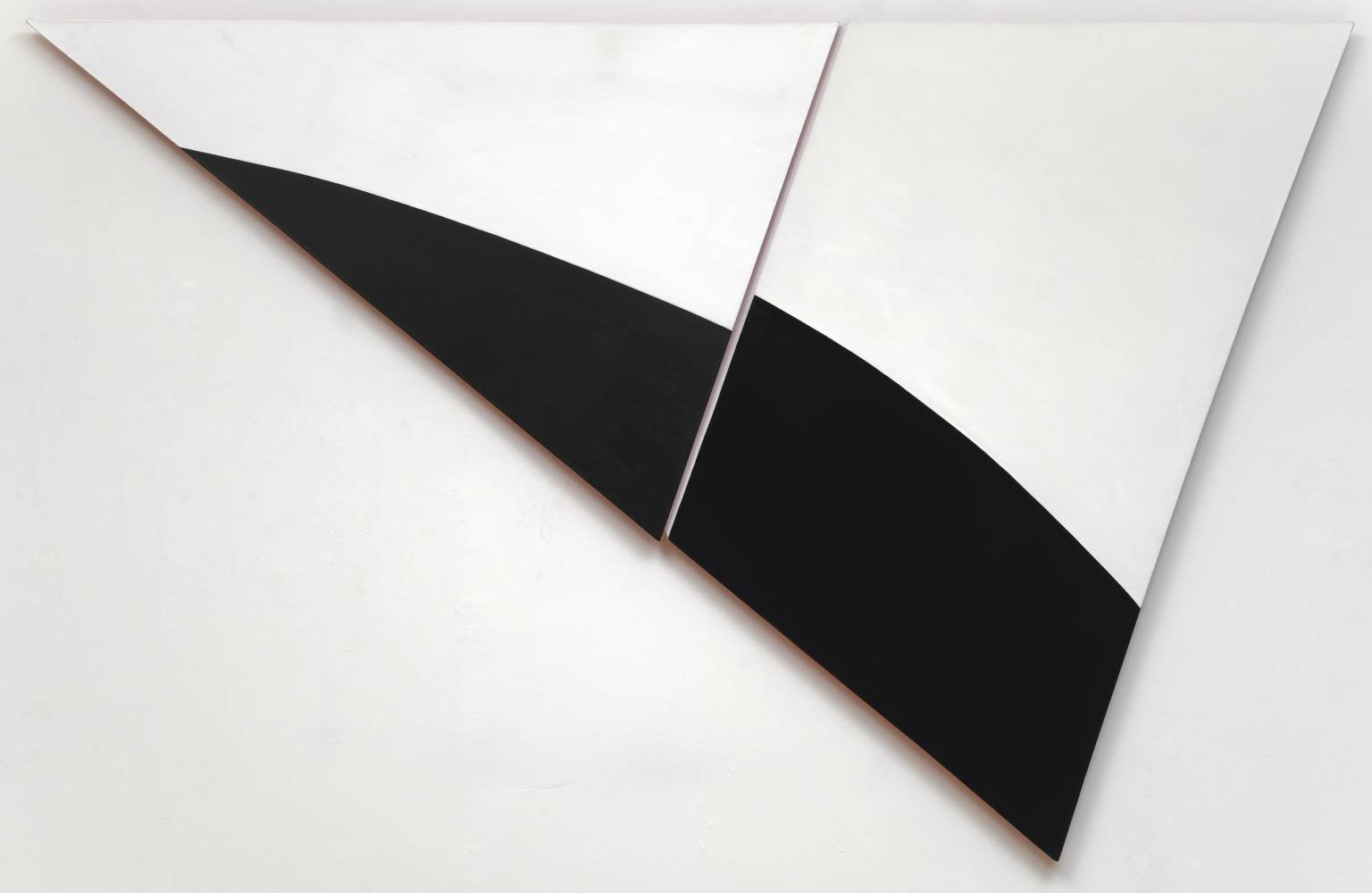
Trevor Bell
1930 - 2014 British
“Albert Einstein once simply stated “Energy cannot be created or destroyed, it can only be changed from one form to another.” For Trevor Bell the role as conduit allowed these expressions of force and energy, part of, yet greater than, oneself to be expressed on to the canvas. This role of conduit is one where the artist becomes an edge breached, where energy moves beyond threshold. This liminality is central to the art objects that Trevor has created. It was not about that energy being illusionistically represented on the canvas, but a gestural record of its journey. The shaped form allowed for that expression to continue beyond the edge of the work itself.”
Joseph Clarke, 2018
The celebration of mutable energy and elemental forces combined with a quest for contemplative stillness is a recurring theme of Trevor Bell’s work. An abstract painter of already strong reputation who burned brightly in the late 1960’s for his pioneering use of shaped canvases.
Bell is an artist most often placed as part of the St Ives Group of artists which made the little seaside town once again the centre of Modern British Art in the late 1950’s, but he is more accurately closer in ambition to artists such as Frank Stella (b.1936) and Ellsworth Kelly (1923-2015) working in the United States. For these artists canvas shape and scale, the activation of the supporting wall and floor of the space, as well as colour, were utilised expressively. There are similarities in his approach too with the work of Robert Mangold (b.1937), considered by many a Minimalist artist.
A pioneer of large, shaped canvases, Bell was considered one of the finest painter’s of his generation. The British painter and critic Patrick Heron, a friend of Bell’s, wrote while reviewing his 1970 exhibition, “equilibrium and stillness, it has always seemed to me, are prime attributes of the greatest painting…”. In Trevor Bell’s art we can find this achieved in a powerful and dynamic fashion.
The natural landscape of the Cornish Coast, The Solent and latterly the deep heat of Florida, have always been a great influence on his work. However, rather than directly refer to the natural world in his paintings he sought to achieve an expression of its essence and phenomena through engaging with the formal elements of the canvas. John Elderfield (formerly head curator at MOMA New York) has said, “Bell was making paintings whose interior shapes referred to landscape - but to the forces as much as to the forms of the landscape; and it was this concern for what is best described as dynamics which led him naturally into an investigation of the mechanics of painting itself”.
His works remain at a remove from the place of their inspiration: a desire for the canvas to command its own space: exist in it on its own terms.
The website maintained by the Estate of the Artist has further resources.

